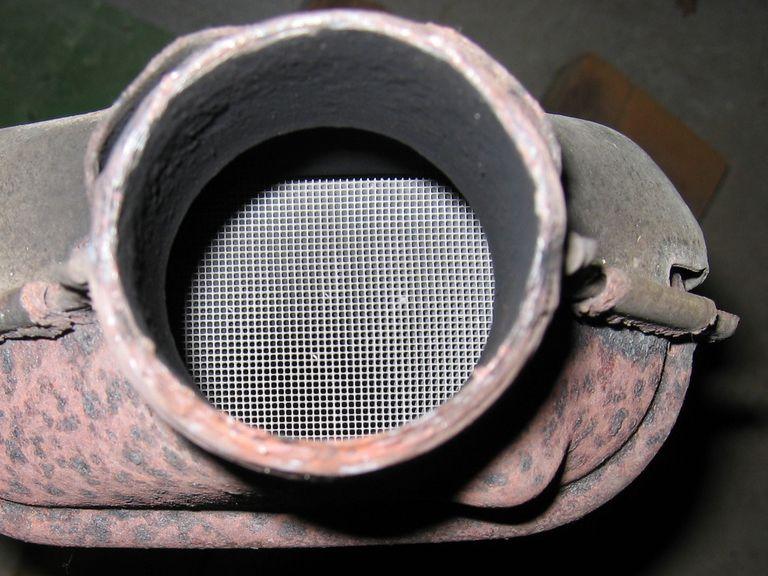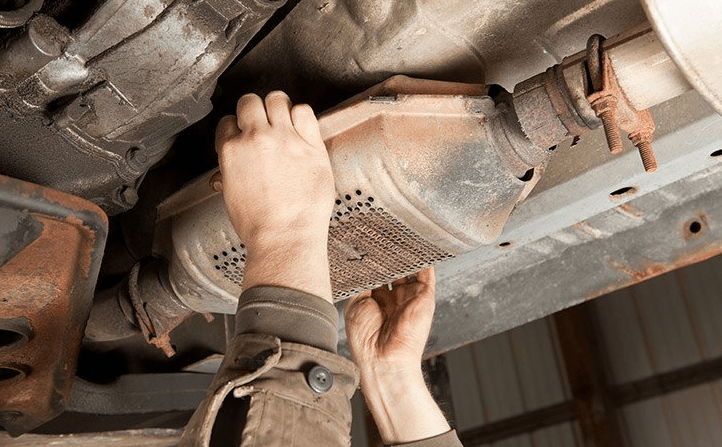The Methods for a Clogged Catalytic Converter Fix
A catalytic converter is an important exhaust system component that performs the final check on the exhaust gases before they get out in the atmosphere. A clogged converter is not only bad for the environment but for the vehicle itself as it creates bigger problems and leads to engine failure down the road. A clogged catalytic converter fix is a professional job, but you can pull this off with some mechanical knowledge, patience, and a free day.
What are the Symptoms of a Clogged Catalytic Converter?
Poor gas mileage and the vehicle acting slow when getting started are the prominent signs indicating something wrong with the catalytic converter. It happens because an issue with the converter directly affects the engine performance and ignition system. But you will face some distinct warnings when the converter is clogged:
- Check engine light comes on
- Poor engine performance
- Engine misfires
- Fuel efficiency drops significantly
- Noises in the exhaust system
- Unusual emissions
- Failed emission test
Ignoring these symptoms is not a good idea as a clogged converter can cause extreme heat, leading to melting internal catalyst components. Also, if things go unchecked for a long time, the engine will take the hit.

The Methods for a Clogged Catalytic Converter Fix
Unblocking a catalytic converter does not mean that you have to replace it. A converter lasts for at least ten years unless it gets severely damaged for some reason. If the time is not up, it will still function after unblocking. However, it’s necessary to diagnose the cause and take steps to prevent it from returning. Otherwise, it will occur again with worse consequences.
Here are a few methods to do a clogged catalytic converter fix.
Use a Cleaning Agent
The simplest fixing method that anyone can do. Get a bottle of high-quality converter cleaner and pour the liquid into the gas tank. A lacquer thinner could work too (mix 1 gallon into a half-full tank).
Then, run the engine at a high RPM for at least half an hour. The cleaning agent is likely to wash the deposits out of the converter. However, this may not be enough for a badly congested converter.
SEE MORE
Fuel and Fuel Additives
If the cleaning agent does not help, add a fuel additive or change the fuel. A different fuel type could clean the dirt accumulated inside this component. For example, if you have been feeding your car some dirt cheap low-octane fuel, try a few tanks of a high-octane alternative.
Similarly, boosting the fuel with an additive may do the deposit clean-up. Fuel additives have the properties to control deposits and inhibit corrosion.
The Italian Tune-Up
Mechanics and experienced drivers often use this technique to fix a variety of automotive problems.
A catalytic converter functions at its best in temperatures between 800 °F (426 °C) and 1,832 °F (1,000 °C). Inexperienced drivers don’t know this. They never crank up the car enough for the converter to reach that temperature range, leading to the damage of the component before time.
The trick here is to push the car hard, including several hard accelerations, for a few miles. It may heat the converter properly and burn off the blocking materials in the converter along with exhaust, cylinder head, intake, and oxygen sensors.
Manual Washing
If these things don’t do the clogged catalytic converter fix, remove it from the exhaust system and give it a wash.
Choose a well-lit place to park the car. Turn off the engine and wait until the catalytic converter cools off completely. Don’t touch it without wearing protective gloves and goggles. Use a wrench or hex key to remove the bolts clamping the converter to its housing.

After the removal, check it for any physical damage. There is no other way but to replace a badly damaged converter. Similarly, you need to change this component if it’s completely blocked. For a partially blocked converter, proceed on with the cleaning process.
1# Use a Power Washer
Place the converter in an open place and wash it thoroughly with a pressure washer. Remember to flush it from ends. The pressure washer will hopefully thrust the pollutants out of the converter’s passage. Then, dry up the converter before putting it back into the exhaust system.
2# Apply a Cleaning Solution
If power washing does not work, you can try another cleaning method. It takes longer but is more effective.
Pour degreaser or laundry detergent into hot water and soak the converter into this mixture. Let it soak overnight. This cleaning agent is likely to dissolve all the contaminants blocking the converter’s passage. After the clog is dissolved, remove the converter from the mixture, and keep in an open place to dry completely. Then, put it back into the car.
Do a final check by running the car for a while.














